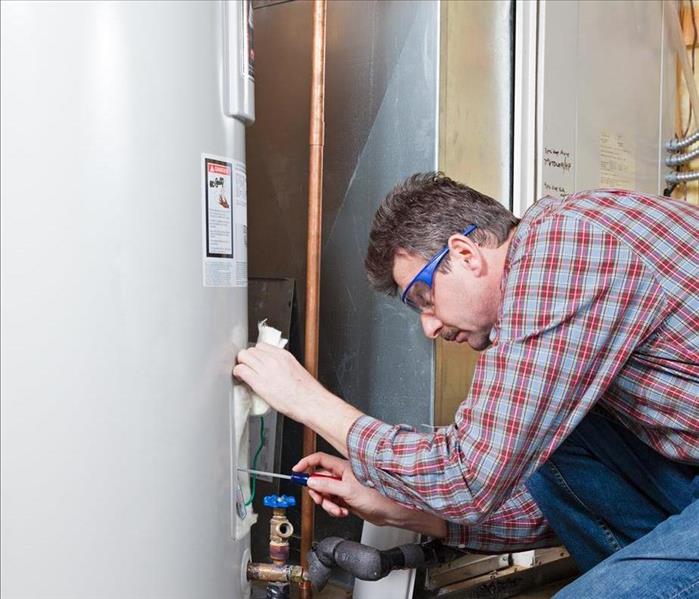Water Heaters and Noise: Quieting the Hobgoblins of Residential Plumbing
9/13/2021 (Permalink)
 If you hear some unusual noises from your water heater in your Bountiful, UT, home, call a professional for assistance
If you hear some unusual noises from your water heater in your Bountiful, UT, home, call a professional for assistance
Every home needs a water heater, but not every heater is created equal. For those at the forefront of environmentally friendly products, a tankless heater will not have many of the noise problems as a traditional or conventional tank. However, for people who still prefer the more affordable — in the short term — options, a tank heater can lead to odd noises. Some sounds are normal, like the ignition or heating components kicking on, but other sounds are not, like:
- Knocking
- Banging
- Clanging
- Scratching
If you hear any of these odd noises, you should contact a plumbing or remediation professional in Bountiful, UT, to assess your tank. In many cases, the tank can be fixed with a simple flush, but a new tank is sometimes required. The outcome typically involves the age and damage to the appliance.
Water Heater Flush
Flushing a water heater is not a complex task, but some homeowners might feel uncomfortable performing such a task without prior experience. Again, you can hire a professional to take care of the flushing.
If you want to give it a go, you will need a hose and a space to drain the water from the tank. Before you begin, you will need to shut off the gas or electricity to the tank. If you have a gas tank, there should be a valve somewhere near the tank's base. If the heater is electric, shut off the circuit breaker to the heater.
With the power turned off and the tank no longer heating, you can turn off the water to the tank. Connect the drainage hose to the drainage tap. You can then stretch the hose to the predetermined drainage area. Once the hose is in place, you can open the drainage valve. Allow the tank to empty completely.
Once the tank is empty, turn the water back on. Leave the drainage hose attached to the drain valve open. Let the water run for 10 to 15 minutes, allowing any sediment to wash away. Turn off the water again. Detach the drainage hose and close the drainage valve. Turn the water back on, allowing the tank to fill. Once the tank is full, turn the power or gas supply back on.
Resolving Other Issues
In most situations, flushing the tank will resolve any unwanted noises because most tank noises stem from sediment. However, there are occasions where a flush will not take care of the problem. In these instances, it is best to hire a professional plumber to assess the tank and the plumbing surrounding the tank to ensure everything is working as it should.
If the plumber suspects the tank is the problem, they will probably suggest replacing the tank. When replacing a tank, you can opt for newer, more efficient models, but remember that many energy-efficient appliances will initially cost more.
A noisy water heater does not necessarily indicate a need for replacement; it could result from sediment requiring a flush. However, if you are not sure of the problem causing the noise, contact a professional to assess the tank and plumbing.






 24/7 Emergency Service
24/7 Emergency Service